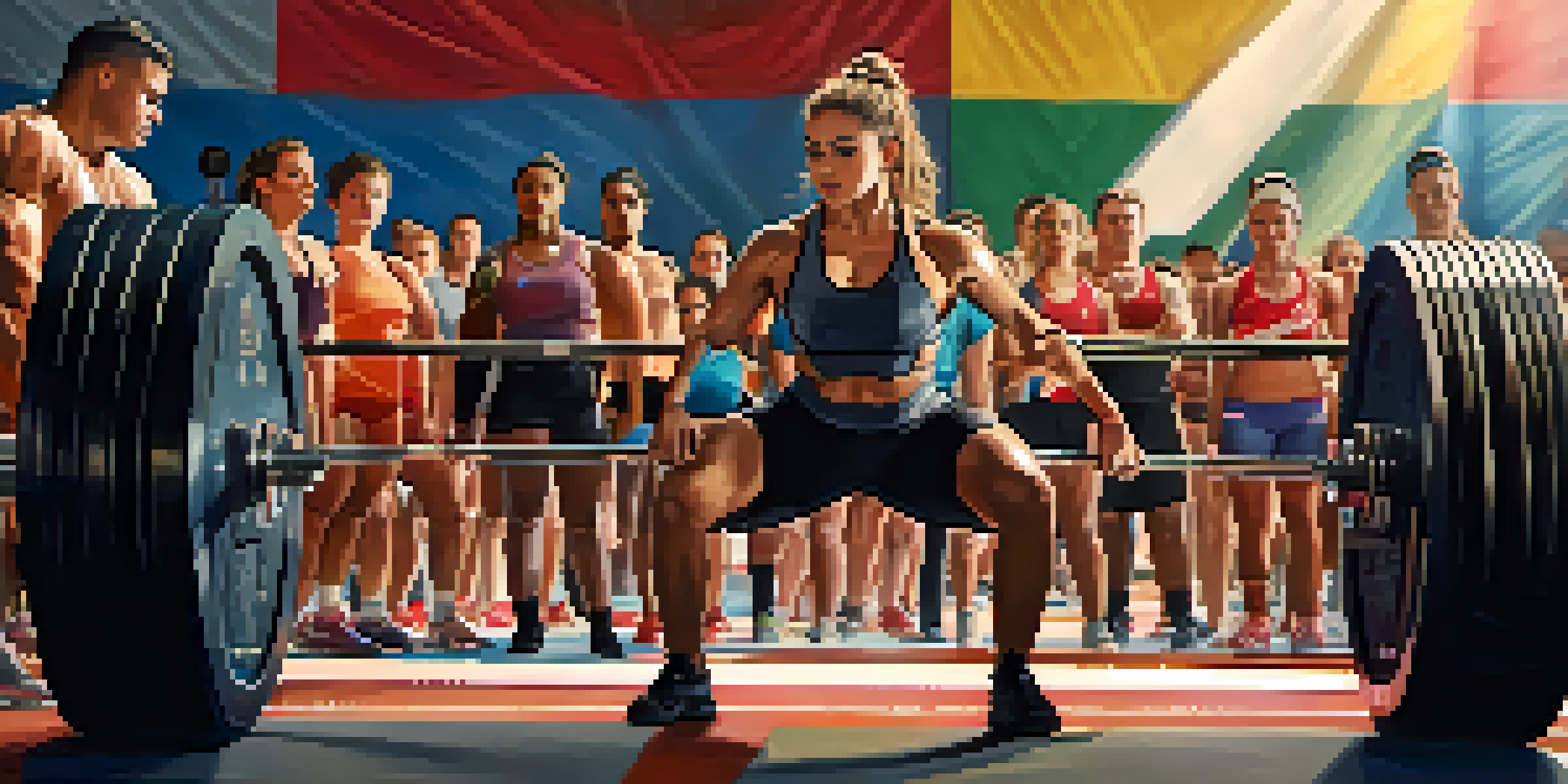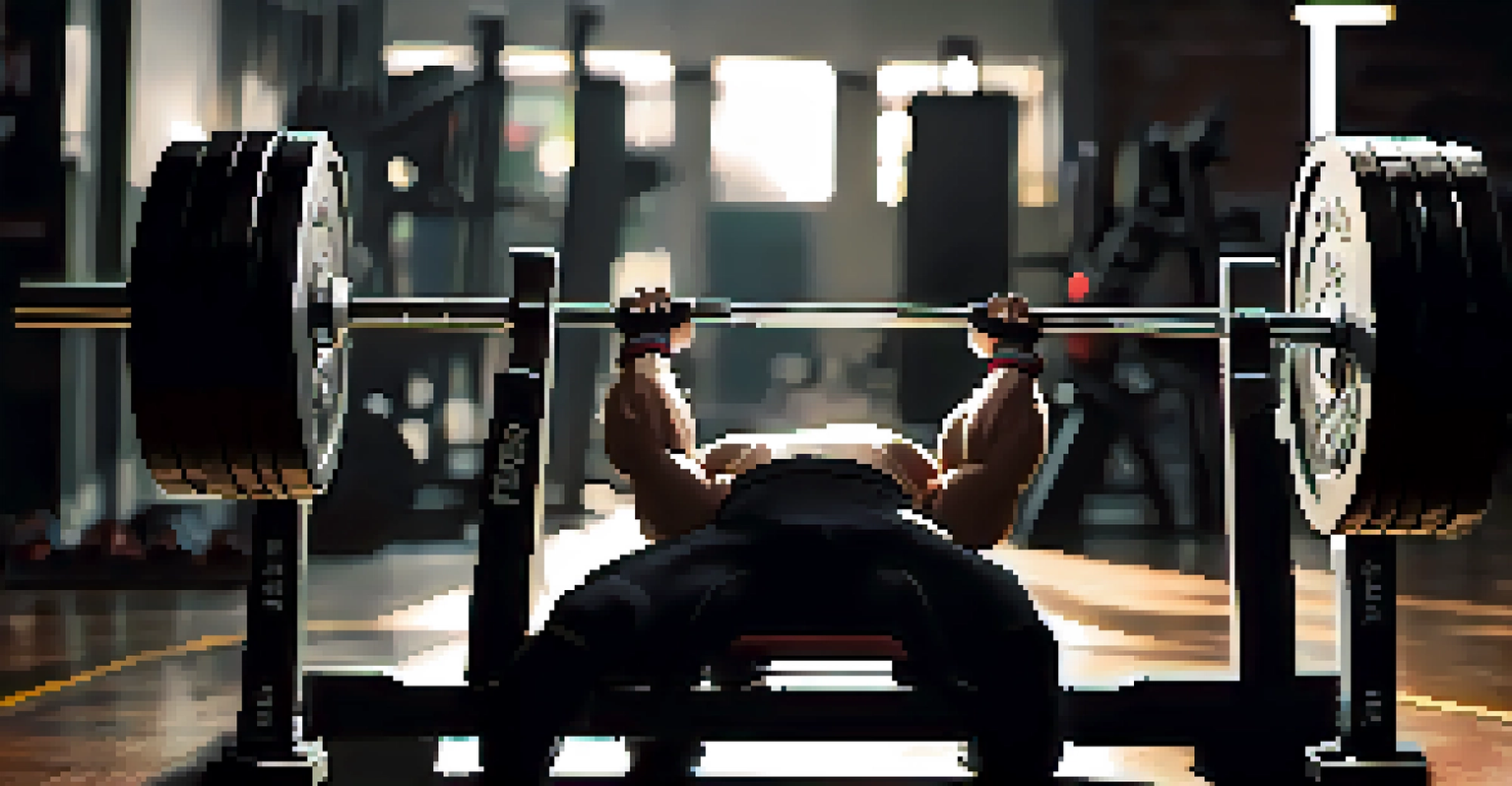Understanding the Rules of Powerlifting Competitions

What is Powerlifting and its Competitive Structure?
Powerlifting is a strength sport focused on three main lifts: the squat, bench press, and deadlift. Each lift tests a different aspect of strength and technique, making the sport diverse and challenging. Competitions are typically held in weight classes, allowing lifters to compete against others of similar size and strength.
Success is the sum of small efforts, repeated day in and day out.
These competitions are organized under various federations, each with its own set of rules and regulations. Understanding the structure of these events is crucial for anyone looking to compete. Lifters must adhere to specific guidelines set by their respective federations to ensure fair play.
Related Resource
Powerlifting competitions can range from local meets to international championships, with the latter attracting the best lifters from around the world. The excitement of competing and the camaraderie among athletes make powerlifting a rewarding experience for many.
The Three Key Lifts: Squat, Bench Press, and Deadlift
The squat is the first lift performed in competitions, where lifters must lower their hips below their knees and then rise back to a standing position. This lift emphasizes leg strength and stability, requiring proper form to avoid injury and ensure a successful lift.

Next is the bench press, which tests upper body strength. Lifters lie on a bench and press a loaded barbell from chest level to full extension. The rules for this lift include keeping the feet flat on the ground and ensuring the barbell touches the chest before being pressed upward.
Powerlifting Overview and Structure
Powerlifting is a strength sport centered on three main lifts and organized through various federations to ensure fair competition.
Lastly, the deadlift involves lifting a barbell from the ground to hip level. This lift engages multiple muscle groups, particularly the back and legs. Proper technique is critical here, as lifters must maintain a straight back and avoid rounding their shoulders to prevent injuries.
Understanding Weight Classes and Their Importance
Weight classes in powerlifting ensure that athletes compete against others of similar body weight. This classification helps level the playing field, making competitions fairer and more exciting. Each federation has its own weight categories, typically ranging from lightweight to heavyweight.
Strength does not come from physical capacity. It comes from an indomitable will.
Choosing the right weight class is a strategic decision for lifters. Some may aim to compete in a lower class to gain a competitive edge, while others may prioritize strength gains over weight loss. It's important to consider individual goals and body composition when selecting a weight class.
Related Resource
Athletes must weigh in before the competition, and the results can impact their performance on competition day. Proper preparation, including nutrition and hydration, plays a vital role in making weight and performing optimally during the lifts.
The Importance of Proper Technique and Form
In powerlifting, technique is everything. Proper form not only maximizes performance but also minimizes the risk of injury. Each lift has specific form requirements that must be adhered to in order to achieve a successful lift and earn valid attempts.
For example, during the squat, lifters are judged on their depth and stance. A lift is only considered successful if the hips drop below the knees. Similarly, in the bench press, the bar must touch the chest before being pressed, and in the deadlift, the lifter must stand up straight without hitching the bar.
Importance of Technique and Form
Proper technique is essential in powerlifting as it maximizes performance and minimizes injury risk during lifts.
Athletes often spend months or even years perfecting their technique. It's common to work with coaches who can provide valuable feedback and help refine lifting styles, which ultimately leads to better performance in competitions.
The Role of Judges in Powerlifting Competitions
Judges play a crucial role in powerlifting competitions, ensuring that all lifts conform to the established rules. They are responsible for making the call on whether a lift is successful or not, based on strict criteria. Every lift is observed from specific angles to ensure fairness and compliance.
Typically, three judges are present during a competition, and a lift must receive a majority of 'yes' votes to be considered successful. This system helps minimize the subjectivity of individual judges and promotes fairness across the board.
Related Resource
Understanding how judges evaluate lifts can help lifters prepare more effectively. By knowing the criteria that judges look for, athletes can focus on the aspects of their technique that matter most, increasing their chances of success on competition day.
Lifting Gear: What You Need for Competition
Lifters often wear specific gear during competitions to enhance their performance and ensure safety. This includes singlets, which are one-piece suits that provide support and help judges identify proper lifting form. Additionally, supportive gear such as knee wraps, belts, and wrist wraps can help athletes lift heavier weights.
Each federation has its own regulations regarding acceptable lifting gear. It's important for lifters to familiarize themselves with these rules before competition day to avoid disqualification. Some lifters may choose to compete raw, meaning they lift without supportive gear, which can be a personal preference or a strategic choice.
Preparation for Competition Day
On competition day, lifters should arrive early, have a warm-up plan, and focus on personal goals amidst the excitement.
Wearing the right gear not only boosts confidence but also provides essential support for the body during heavy lifts. Preparing and testing gear in training can help lifters feel more comfortable and ready when it counts.
The Competition Day: What to Expect
Competition day can be both exciting and nerve-wracking for lifters. Athletes should arrive early to allow time for weighing in, warming up, and mentally preparing for their lifts. It’s crucial to have a plan for the day, including a scheduled warm-up routine and strategies for handling nerves.
Lifters should also be prepared for the atmosphere of a powerlifting meet. The energy is typically high, with fellow competitors cheering each other on and judges watching closely. Building a support system and having friends or teammates present can make the experience more enjoyable and less intimidating.

Finally, it's essential to stay focused on personal goals rather than getting caught up in the competition. Each lift is an opportunity to showcase hard work and dedication, regardless of the outcome. Embracing the experience as a whole can lead to valuable lessons and growth in the sport.